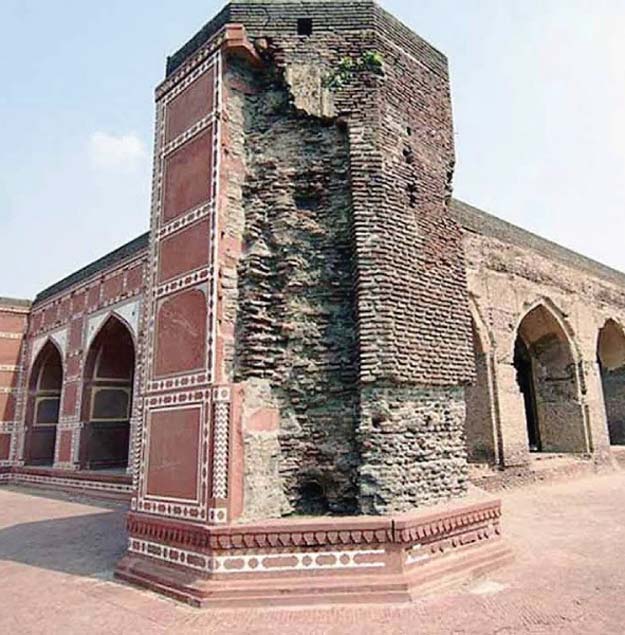
The electricity work on the tomb and its premises was initiated for the first time in 1960s but even after the passage of 50 years, only 70% of the work could be completed.
A building made up of red stones is the last resting place of Queen Nur Jahan which is situated close to Ravi Bank. Nur Jahan spent the last days of her life with her only daughter Ladli Begum at the place in isolation and passed away at the age of 68 on December 16, 1645.
A tunnel in the red building leads to a room where a protection of old chain has been formed. Beneath these very four-walls of the chains is the last resting place of both Nur Jahan and her daughter Ladli Begum. The place is located on 17 acres in Shahdara, close to the tomb of her husband Jahangir, and the tomb of her brother Asif Jah. Together with the Akbari Sirai, these monuments are clustered on a 107-acre site known as the Shahdara Complex.

The tomb had undergone minor repairs in the 1950s, 1960s and 1980s, but this would be the first major restoration of the monument.
The walls, floors and domes of the monument have incurred damage, while floral and geometric patterns lining the tomb’s domes have eroded. Besides, the edges of the marble flooring have been chipped off.
The project will involve recreating the frescoes and restoring the red sandstone façade, walkways and surrounding gardens.
The carving of stones is being carried out and many skilled artisans are busy working on it. In addition, a boundary wall, destroyed during the laying of railway lines in the late 19th Century, has been rebuilt to keep out intruders, including homeless people who sleep there at night.
While speaking to Express News, an artisan Nafees Umar, who is working on the site for many years, said, “Making a new building is an easy task but restoring a historical and old building in its original state is very difficult.”
He added that the drawing of the design is drawn and they are prepared in a way that there is no difference between the old and new work. “In many places there are artworks that have been eliminated completely. This is the reason the design of some other buildings constructed in that era are viewed and with its help the work is done,” he maintained.
Reliving the legend: Nur Jahan-Jahangir story told through kathak
Nafees pointed out the two sides of the dilapidated tomb have been restored in its old form while restoration work on other parts is underway. He said, “Now date trees and flowers could be seen in abundance at the place.”
When contacted, Archaeology Department Deputy Director Malik Maqsood told Express News that the work of restoring an old building is more difficult than constructing a new structure. “Funds are not provided in one go rather they are released from time to time under different projects,” he said.
He said there is a shortage of artisans to carry out renovation work and only few skilled artisans are found in Pakistan who can work on old buildings.

PHOTOS: EXPRESS
He pointed out that the red stone used in the restoration of the building has to be bought from India and when relations between the two sides are strained then it becomes difficult to import stone from India and the work halts.
However, he expressed hope that the work to a great extent will be completed this year.
Historians believe that Nur Jahan and her daughter had both been kept in coffins but during the rule of the Sikhs, the bodies were taken out of the coffins and buried in the land in the vault. This vault remains closed for the public.
Published in The Express Tribune, May 10th, 2018.


































COMMENTS
Comments are moderated and generally will be posted if they are on-topic and not abusive.
For more information, please see our Comments FAQ